Maison Martin Margiela Line 3 (Untitled) (2010): Dark Galbanum & Dirty Green Musk {Perfume Review}
(Untitled) by Maison Martin Margiela is the debut perfume of a fashion label known for its creativity. If you think that an interesting mind, that of designer Martin Margiela, can apply itself to an unfamiliar medium and still be able to offer the same kind of aesthetic rewards, thanks to its sense of criticism but without being a perfumer in the technical sense of the term, then you would expect the first perfume by Martin Margiela to be interesting.
The conceptual apparatus surrounding the scent is undoubtedly signed Margiela. The non-name of the perfume to start with, is consistent with the vision of the house founder,
"Its [the perfume's] ambiguous title sits in harmony with the brand's philosophy of collective work, anonymity and free interpretation, allowing the scent to hold different meanings for different people. "...
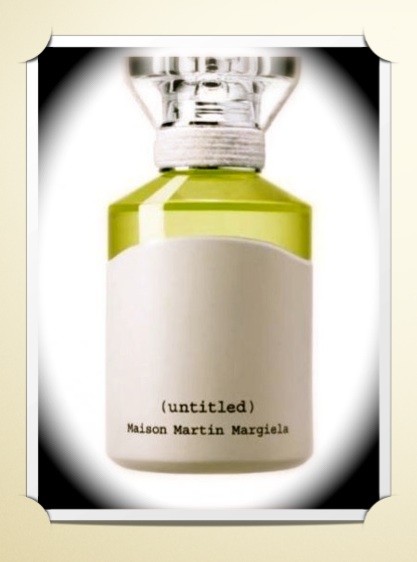
Since we tend to think of a perfume as containing the animus of its creator, it can be a little confusing or at least disappointing to learn that Margiela definitely left the label in December 2009, this even before the launch of his first perfume which starts looking like an abandoned doll on the floor or an orphan. But this is not so according to A Blog Curated by Maison Martin Margiela which writes,
"...it is with apt poetic license that Martin leaves us not with a parting sartorial statement, but rather the powerful lingering scent of '(untitled)', the debut perfume from the house of Margiela."
Untitled thus signs an absence, a thought we can intuitively understand as it is one of the fundamental functions of the mystery and evanescence of perfume.
A scent can be your floating spiritual body when you are physically removed. If you partook in the creative process, in it can linger your spirit. The perfume had the time to be developed with the input of the creator of the brand over the course of three years. It is the first fragrance in Line 3, which will be devoted to the olfactory universe of the brand.
In 2001, an initial limited-edition personal fragrance project was launched for their Tokyo Ebisu boutique; they offered 5 variations of a 100% vegetal patchouli oil coded « X », « E », « B », « M », « Q » to be both worn and burnt in the home.
More perfume collaborations with l'Oréal are announced as the first one was seen as a particularly fruitful and satisfying one. White is the fetish color of Margiela. The flacon of Untitled is directly inspired by the simple design of a 19th century apothecary and lab perfume bottle which was dipped in white paint.
The perfume itself does not smell white at all. In fact, it smells rather black and green with some translucent yellow cutting through the shadows.
The initial olfactory proposition was to do a patchouli perfume - a darkish aroma - in reference to the olfactory logo of Maison Martin Margiela (his stores are perfumed with the scent of the earthy leaves). The ensuing jus retains the original preference for a darkly scented concoction but showcases green galbanum instead, which has been worked in such a manner as eschewing any facile springtime connotation.
Invited to do so by Maison Martin Margiela, you can perceive the fragrance in different ways. At one point, I see it as an animaliic and salty galbanum perfume, a dirty green marine scent as if a commercial for Vent Vert by Balmain had been filmed by the seaside with a herd of goats grazing nearby. The marine effect rests on ambergris more than on Calone. It is reminiscent of the marine effect in Vivara by Pucci (1965), a pean to dry heat, herbs, salt and sun. Rather than the new freshness of Calone which only tinges it, it is the old dryness of ambergris. Rather than being in the water and bathing the nose in the waves, we are standing on a windy cliff. At long last, when the perfume's full personality has had the time to express itself, two simple words impose themselves: green musk.
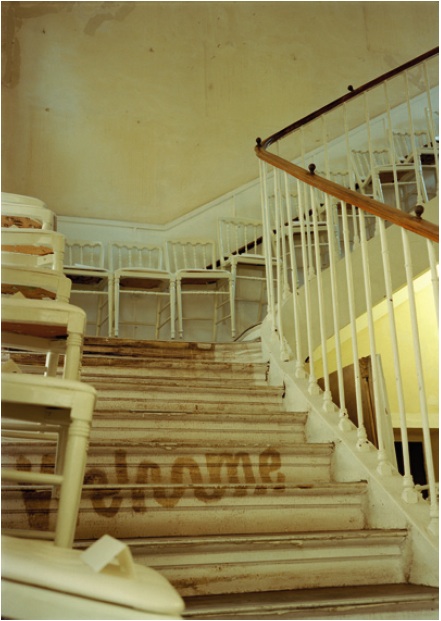
Despite the aseptic, purifed white tones that dominate the Margiela universe, (Untitled) is thus not clean-smelling. Rather, it calls attention to the distressed whites, the sense of cultivated dereliction that permeates the pure whiteness of Margiela. It is a sense of purity that is not clinical and antithetical to dirt but rather finds it through the stains and marks of human passage. Like a Greek cynic could have said,
"filth is here on my skin, but it does not touch me."
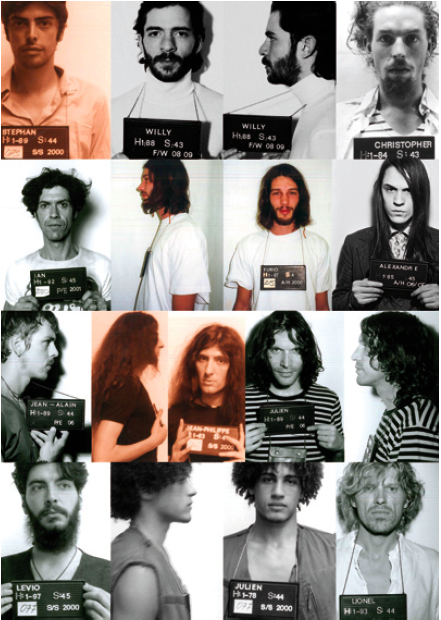
The scent calls attention to the natural, unkempt signature style of the hair at Maison Martin Margiela. Maison Martin Margiela said about the scent what they wanted to do with it,
« Pour ce premier parfum, nous aimerions explorer une piste verte, simple et naturelle... Ce devra être un flash olfactif. La suite est d'avantage texturée, féminine et presque sensuelle. »
"For this debut perfume, we would like to explore a green path, a simple and natural one...it will have to be an olfactory flash. The ensuing stages are more textured, feminine and almost sensual."
Galbanum is the principal ingredient, with musk, and it was seen to be able to express the style of couture of MMM,
"...rappelant, dans sa crudité, les vêtements mis à nu, les ourlets coupés à vif, signatures emblématiques de la Maison."
"...recalling in its rawness, the stripped down clothes, the hems cut in the flesh, the emblematic signatures of the House."
Perfumer Daniela Andrier renews our sensation of galbanum in perfumery by turning traditional coolness and freshness into warmth and dryness - and by evoking a sense of dark sensuality rather than springtime beginnings. The orange blossom note also brings its roundness and animalic darkness to the composition.
It is a little as if the scent of galbanum had been left to mix with labdanum resin, neroli, and the natural smell of goat hair; labdanum was traditionally harvested by running herds of sheep or goats into the bushes so that their hair would retain the resin. It is a labdanum that refuses to reject its natural states. Untitled to me smells like that labdanum which a Greek shepherd might smell as he leans to rest on a rock.
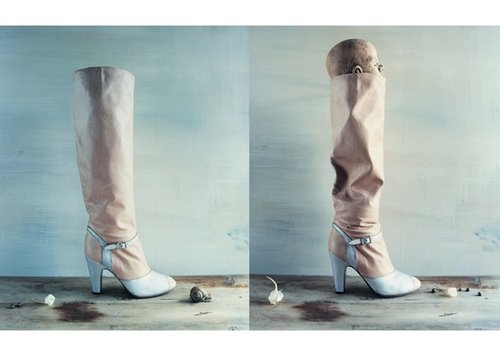 The perfume opens on a very fresh and sweet spray of green notes but very quickly morphs into a denser, darker and rather pungy animalic scent with whiffs of dry salty squid. The fishermen-village accord is probably not willed but is a by-product of a somewhat leathery note of ambergris. "Untitled" is resinous, sweetish, powdery with just a clear shard of citrusy light-reflecting glass reminding you that there is daylight outside the cellar-like darkness of the emerging composition. The personality of the scent seems to be more than frankly green, green-tinted musk and amber with a salty edge and sun-dried herbal overtones reminiscent of caramel-like immortelle. The fragrance is 4/5 warm and dark and 1/5 fresh instead of the more common contrast of about 50/50 freshness and warmth when this opposition is sought after.
The perfume opens on a very fresh and sweet spray of green notes but very quickly morphs into a denser, darker and rather pungy animalic scent with whiffs of dry salty squid. The fishermen-village accord is probably not willed but is a by-product of a somewhat leathery note of ambergris. "Untitled" is resinous, sweetish, powdery with just a clear shard of citrusy light-reflecting glass reminding you that there is daylight outside the cellar-like darkness of the emerging composition. The personality of the scent seems to be more than frankly green, green-tinted musk and amber with a salty edge and sun-dried herbal overtones reminiscent of caramel-like immortelle. The fragrance is 4/5 warm and dark and 1/5 fresh instead of the more common contrast of about 50/50 freshness and warmth when this opposition is sought after.
It reminds you a bit of the warm (rather than cool) green ambery and musky blend Yendi by Capucci (1974), admittedly one of those representative green perfumes of the 1970s that served as inspiration for Daniela Andrier to compose "(Untitled)."
Untitled resolves as a skin scent which is soft, even tender. The development is linear. The perfume once you get used to it has a recognizable signature which is a bit on the addictive side. It smells of a green musk letting out barnyard aromas (animalic jasmine included) escape while managing to preserve a discreet, understated sense of citrusy and breezy freshness all along. One recognizes Daniela Andrier's signature eau-de-cologne accord that is now pervasive in the Prada perfumes she creates. It is dirty-clean and hot-cool. It plays with conventions and limits and is not too easy to label, a la Margiela.
Notes are galbanum, a green note of boxwood, lentisc, carnal jasmine, incense, bigaradier, creamy cedar wood







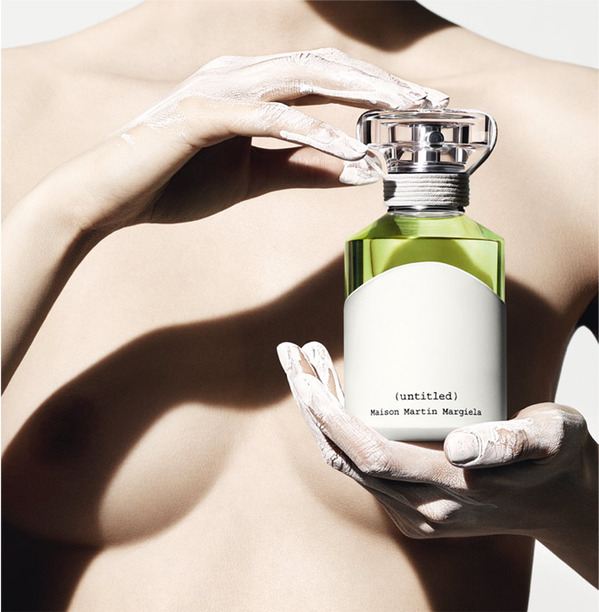



Very graphic and elegant description.
However there is one error I must point out. This article states that galbanum was retrieved from grazing goats. This is incorrect. LABDANUM was the resin retrieved from grazing goats.
Other than this one misquote, this was a great descript.
Thank you -- I made the correction. I got carried away by the animalic, goat-y impression of the "labdanum-in-beard" feel, as they used to describe the labdanum with goat hair in it, while translating it automatically as "galbanum" because it is quite green. By the way, that might correspond, more than I ever thought, to the bearded Martin Margiela associates.